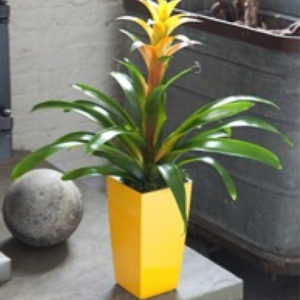Light: Bright, filtered or indirect sunlight is best. Direct sunlight may burn leaves especially broader leaves.
Soil: Keep the soil evenly moist, but do not over-water or allow the plant roots to stand in water.
Water: Should be planted in well – draining soil to avoid water-logging.
Temperature: Ideal temperature range of 55-85ºF (13-29ºC) works best for bromeliads.
Category: Plants Options
Related products
-
 Quick view
Quick viewAlocasia Alocasia ‘Poly’
Soil: Use well draining soil. Water: Water until soil is moist. Do not water again until top of soil is dry to touch. Water frequently (once a week) when plant is actively growing. Light: Lighting: place the plant in filtered sunlight. Prolonged direct sunlight will burn the leaves. Temperature: Temperatures below 15 degrees will make the plant dormant.Read more -
 Quick view
Quick viewSpathiphyllum ‘Sensation’ – Peace lily
Light: Place peace lilies away from direct sunlight as strong sun rays may damage the leaves Water: Give the plant adequate watering, ensuring it is enough to dampen the soil but not to water-log it. Temperature: Peace lilies are used to high humidity, therefore mist the leaves at least once a week.Read more -
 Quick view
Quick viewClerodendrum thomsoniae/ Bleeding heart vine/ Glory boomer
Light: Partially shaded site with some direct morning or late afternoon sunshine with minimum temperatures of 7 degrees C. Water: Water your clerodendrum generously in the summer months and do not allow it to dry out. Reduce watering during cooler spells Fertilizer: Plant in well fertilized soil.Read more -
 Quick view
Quick viewDracaena ‘Lemon Lime’
Temperature: Keep in a warm room preferably where the dracaena can get consistent direct sunlight. Water: Water only when the top inch of the soil is dry to avoid over watering as it may lead to root rot. Fertilizer: Use soluble/liquid fertilizer especially when growing( sprouting new foliage)Read more



Reviews
There are no reviews yet.